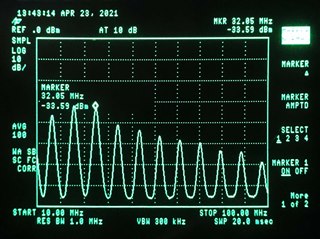Other Parts Discussed in Thread: UCC12040, ,
Unfortunately, we have noticed high EMI with our new PCB. The UCC12050 isolates +5V from USB to other circuitry, and part of the EMI passes to the USB cable. Additional filtering here might help, but a near field probe shows a number of harmonics at both sides of UCC12040:

What can be done to improve the design? The layout is very similar to UCC12050EVM-022, with bypass caps close to UCC12050 pins to minimize loops. Initial idea was that different ground planes might act as an antenna, but that appears to be a false assumption.


